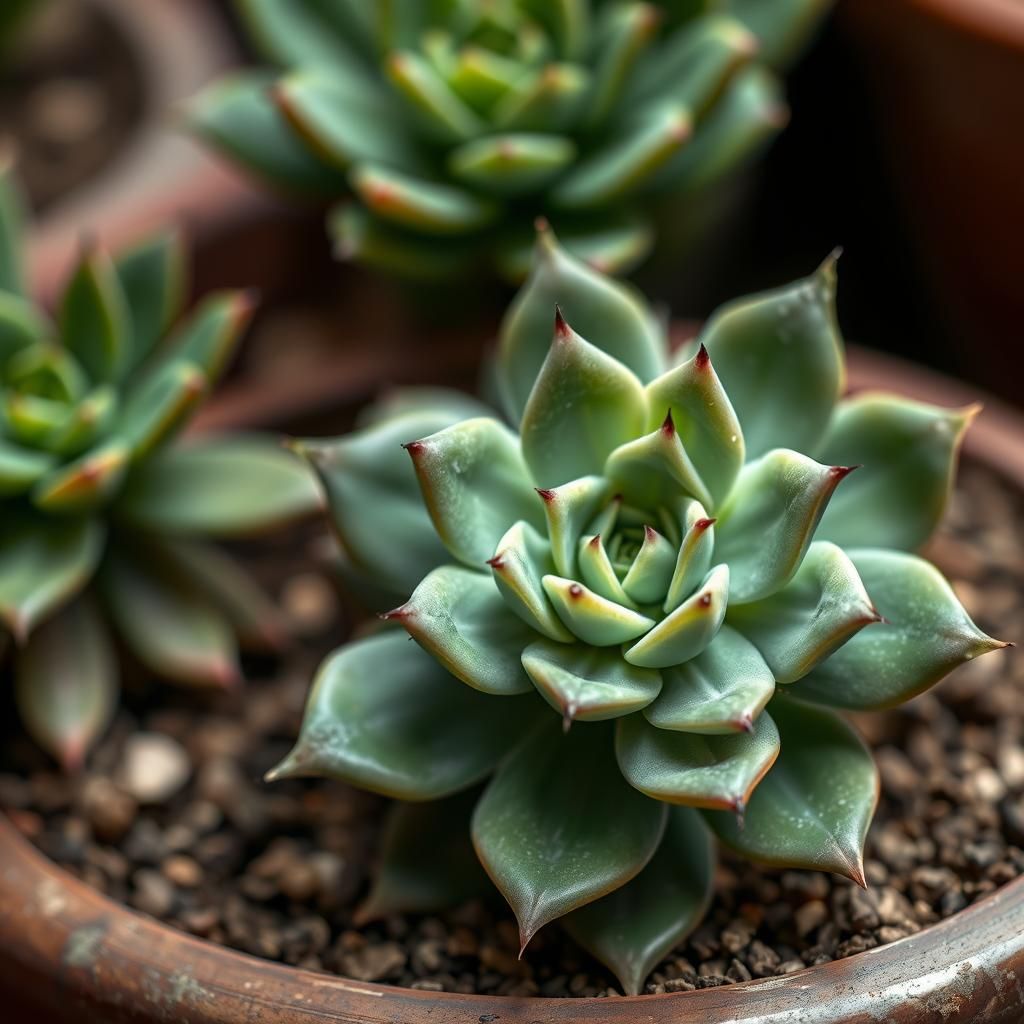Step-by-Step Guide to Growing a Succulent from a Leaf: Tips and Tricks for Success

Growing succulents from leaves is a rewarding and surprisingly simple process that allows plant enthusiasts to expand their collection with minimal effort. These hardy plants, known for their thick, fleshy leaves, can be propagated easily by following a few essential steps. Whether you’re a novice gardener or a seasoned plant parent, this guide will provide valuable tips and tricks to ensure your succulent cuttings take root and thrive. Discover the secrets to successfully nurturing these resilient plants from a single leaf, transforming your gardening experience into a fulfilling journey of growth and creativity.
How to Successfully Grow a Succulent from a Leaf
Growing a succulent from a leaf is an enjoyable and rewarding process that allows you to propagate new plants from existing ones. The first step is to carefully remove a healthy leaf from the succulent, ensuring that you take the entire leaf without leaving any part behind on the plant. Allow the leaf to dry and callous over for several days in a shaded area, as this reduces the risk of rot when placed in the soil. Once the leaf has formed a callous, place it on top of well-draining soil, preferably a succulent or cactus mix. Water sparingly, using a spray bottle to mist the soil lightly and keep the environment humid. In a few weeks, tiny roots and new growth will begin to emerge from the base of the leaf, signaling that your propagation attempt is successful.
Understanding the Ideal Leaf Selection
When selecting a leaf for propagation, it is crucial to choose a healthy and plump leaf from the mother plant. Look for leaves that are free from damage, disease, or pests, as these factors can hinder the growth of the new plant. Ideally, you should take leaves from the lower part of the plant, as the upper leaves may be under more stress due to sunlight exposure. A succulent leaf should be thick and firm, as this will provide adequate moisture and nutrients for the new plant as it develops.
The Importance of Callousing
After removing the leaf from the plant, allowing it to callous is an essential step in the propagation process. The callousing period, typically lasting three to seven days, helps to seal off the cut end of the leaf, minimizing the risk of infection and rot when it is placed in the soil. This process also allows the leaf to lose some moisture, which can help it adapt to its new environment. Remember to keep the leaf in a warm and dry location during the callousing phase for optimal results.
Choosing the Right Soil
Picking the right soil is critical for the successful growth of your succulent leaf. A well-draining soil mix, such as those specially designed for cacti and succulents, is recommended to prevent excess moisture retention. You can also create your own mix by combining regular potting soil with materials such as sand, perlite, or pumice. These amendments enhance drainage and airflow, allowing the roots to establish themselves without drowning in overly saturated soil.
See also:
Watering Techniques for Juvenile Succulents
Watering is one of the most crucial aspects of caring for newly propagated succulents. In the initial weeks, it is essential to maintain a delicate balance with water; overwatering can lead to root rot, while underwatering can halt growth. Use a spray bottle to lightly mist the soil, ensuring that it remains slightly moist but not soggy. As the roots develop, you can gradually increase the frequency of watering, but always allow the upper layer of the soil to dry out before reapplying moisture.
Recognizing Signs of Successful Propagation
As your succulent leaf begins to establish itself, you’ll want to look for signs that the propagation is successful. After a few weeks, you should notice tiny roots forming from the base of the leaf, as well as new growth, often recognized as small pups or offsets. These indicators signify that the plant is adapting to its new environment and is ready for transplanting into a more substantial pot if necessary. Remember that this process requires patience, as it might take some time for roots and new growth to appear.
| Aspect | Details |
|---|---|
| Leaf Selection | Choose a healthy and plump leaf from the lower part of the plant. |
| Callousing | Allow the leaf to callous for 3 to 7 days before planting. |
| Soil Type | Use a well-draining soil mix for succulents or cacti. |
| Watering Technique | Mist the soil lightly, keeping it slightly moist without flooding. |
| Signs of Growth | Look for tiny roots and new growth (pups) after a few weeks. |
Essential Supplies for Propagating Succulents from Leaves
To successfully propagate succulents from leaves, you will need a few essential supplies. First and foremost, gather a clean and sharp pair of scissors or pruning shears to cut the leaves without damaging them. You'll also need a well-draining potting mix, specifically formulated for succulents and cacti to prevent rot. Additionally, small pots or trays will be useful for placing the leaves on the soil surface. Lastly, consider having a spray bottle handy for light misting to provide adequate humidity while the roots are developing.
Choosing the Right Succulent Leaves
Selecting the right leaves is crucial for successful propagation. Choose healthy and plump leaves from established succulent plants, as these have the highest chance of rooting. Avoid any leaves that show signs of damage, pests, or disease, as these can hinder the propagation process. It's often best to use lower leaves from the plant, as they tend to be more mature and vigorous compared to younger leaves.
Preparing the Leaf Cuttings
Once you've selected the leaves, the next step is to prepare them for propagation. Allow the cut ends of the leaves to dry and callous over for at least 24 hours before planting. This drying process helps to prevent rot and increases the chances of successful rooting. Place the cuttings in a bright, indirect sunlight location during this time, as excessive sun exposure can further damage the leaves.
See also:
Planting the Leaves in Soil
After the leaves have calloused, it's time to plant them. Fill small pots with a well-draining potting mix, and lay the leaves on top without burying them. Ensure that the cut end of each leaf is in contact with the soil, as this is where the roots will emerge. Avoid overwatering initially, as too much moisture can lead to rot. Instead, lightly mist the soil to keep it moist but not waterlogged.
Watering and Care for New Shoots
Once you start seeing new shoots or roots, it’s time to adjust your care routine. Gradually introduce more water, ensuring the soil remains slightly moist but not soggy. You may also want to move the pots to a location with more direct sunlight once the new plants start to grow. Keep an eye out for any signs of stress, like wilting or discoloration, as these may indicate that the plants need more or less water or light.
Transplanting Your New Succulents
When the new succulents have developed robust roots and multiple leaves, it's time to transplant them into larger containers. Carefully remove them from the original pot, taking care not to damage the young roots. Fill a new container with fresh, well-draining potting mix, and gently place the succulent in its new home. After transplanting, allow them some time to acclimate before resuming normal care to ensure successful growth in their new environment.
Questions from Our Readers
How do you propagate a succulent from a leaf?
To propagate a succulent from a leaf, first, gently twist the leaf off the plant, ensuring you get the entire leaf without tearing it. Allow the leaf to callous over for a few days in a dry, shady spot to prevent rot. Once the leaf has dried, place it on top of well-draining soil and mist it lightly, keeping the soil slightly damp while waiting for roots and new shoots to develop.
How long does it take for a succulent leaf to root?
The time it takes for a succulent leaf to root can vary, but generally, it can take anywhere from 2 to 4 weeks. Factors such as temperature, humidity, and the specific type of succulent can all influence this process. To ensure rooting success, keep the conditions warm and maintain proper moisture levels in the soil, avoiding overwatering.
See also:
Can all succulent varieties be propagated from leaves?
Not all succulent varieties can be successfully propagated from leaves; some types, like jade plants and echeverias, are known to propagate well this way. However, others, such as certain agaves or aloe, may not produce viable offsets from leaves. It is important to research the particular variety you wish to propagate to determine the best methods for successful growth.
What should you do if the leaf starts to rot?
If the leaf starts to rot, it’s important to act quickly to save your propagation attempt. First, remove the leaf from the soil and inspect it for damaged areas. Cut away any rotten parts with a sterile knife and let the leaf callous again before attempting to replant it. Make sure to use fresh, well-draining soil and adjust your watering technique to prevent future rot.

If you want to read more articles like Step-by-Step Guide to Growing a Succulent from a Leaf: Tips and Tricks for Success, we recommend you check out our Pots category.
Leave a Reply
Related Articles